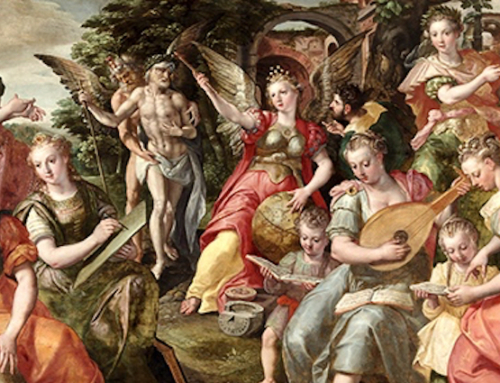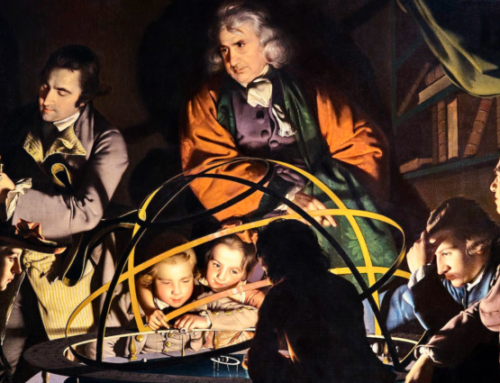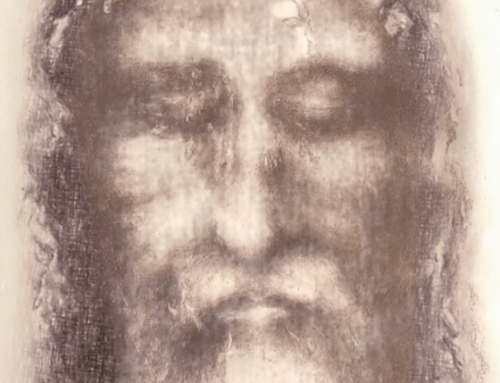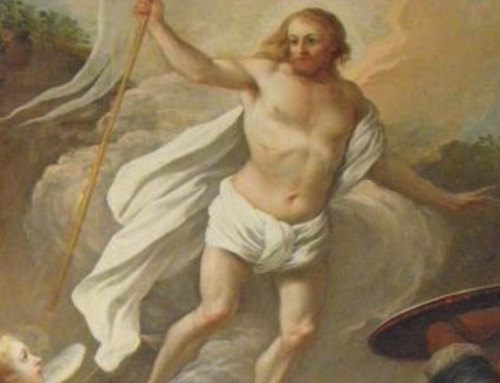 It will hardly surprise readers of this journal, the members of our Imaginative Conservative parish, but scientists are cottoning onto the fact that creativity is heightened by awareness of the past.
It will hardly surprise readers of this journal, the members of our Imaginative Conservative parish, but scientists are cottoning onto the fact that creativity is heightened by awareness of the past.
The Times newspaper reported findings in The Journal of Experimental Social Psychology, that: “Psychologists at the University of Southampton split 175 Irish undergraduates into two groups. One set was asked to remember ‘an ordinary event in your life’ and think about how it made them feel, while the other was tasked with ‘immersing [themselves] in a nostalgic experience.’”
They were told to write story about “a cat, princess, race car, or starting with the line ‘One cold winter evening, a man and a woman were alarmed by a sound coming from a nearby house’… The nostalgia-primed writers did substantially better than their peers.” The test was repeated online, using 106 American students, to similar results.
The Times editorial, also on 2nd March, 2015, trumpeted that “Anyone who thought that a sepia-tinted view of the past would deaden the creative process will be surprised by the results.”
This will hardly be news to my old master, Russell Kirk, now enjoying his eternal reward–especially considering that his 1962 novel, The Old House of Fear, singlehandedly resurrected the vast and enduring demand for gothic novels. But it is an important step in the right direction.
It begins to overturn the psychological orthodoxy that nostalgia stultifies creativity, which supposedly thrives on introspection. Instead, dwelling on the past, “while it has traditionally been regarded as a mental straightjacket, or even a symptom of depression, the psychologists believe it has the opposite effect, enlarging the mind and making it more sensitive to new concepts.”
Indeed, the self can be a straight-jacket tighter than the cavalcade of history, with all of its colour, pageantry and surprise. It is probably the monochromatic ideologue—a sorry scion of Rousseau or Marx or Freud, who thinks that the greater art can be mined from the misery of a slum childhood or a broken home than from ascetic saints and bold crusaders, Leonardo or Marco Polo, valiant medieval queens, mountaineers or pirates of the Spanish Main.
“Nostalgia harnesses the past for engagement with the past and future,” it continued. “Could these two roles—nostalgia as a topic of creative work, and nostalgia as a source of creativity—strengthen each other (and) recapture the spirit of play and exploration characteristic of childlike thinking?”
They also linked imagination to “relaxation” and to “walking, warm showers and the colour blue.” Yes, well, shrinks cannot be expected to get it completely right on the first try. Happily, reporters also cited Homer’s Odyssey, Dostoevsky’s novel Notes from the Underground, Laurie Lee’s autobiographical Cider With Rosie, and Britain’s perennial sitcom, set in World War Two, “Dad’s Army.” These seem to outweigh the creative effects of walking relaxed, from a warm shower into a blue towel.
Creativity, they concluded, often involves “combining concepts that seem disparate,” while nostalgia does something similar by evoking the past in the context of the present. The psychologists also speculated that novelists, film-makers, and artists who choose to delve back into the past may be able to summon greater powers of imagination.
As to be expected, the scientists and journalists missed more than half of it, but they are on the right track.
 First off, they fell for the trick of nostalgia—hook, line and sinker—and do not reveal our secret. Nostalgia, proper, is only your past—your fifth birthday, or first day in school, or memories of your grandparents; it is not Cider With Rosie, which is Laurie Lee’s nostalgia set nearly a century ago. ‘Dad’s Army’ is only nostalgia for British octogenarians who recall World War Two, not modern Irish or American undergraduates. But our shrinks lumped the past altogether in a vast jumble, as if Sir Francis Drake strode down Carnaby Street in the ‘Swinging Sixties.’ Their oversight cloaks, for a happy while, the moral messages inhabiting an enormous past assembled by countless generations of moral beings made in their Maker’s image. The past is the neutron bomb for Imaginative Conservatives, flattening streets full of jerry-built, concrete ideology, preserving humans and their timeless values in a divine order. Quite literally for God’s sake, don’t tell the scientists!
First off, they fell for the trick of nostalgia—hook, line and sinker—and do not reveal our secret. Nostalgia, proper, is only your past—your fifth birthday, or first day in school, or memories of your grandparents; it is not Cider With Rosie, which is Laurie Lee’s nostalgia set nearly a century ago. ‘Dad’s Army’ is only nostalgia for British octogenarians who recall World War Two, not modern Irish or American undergraduates. But our shrinks lumped the past altogether in a vast jumble, as if Sir Francis Drake strode down Carnaby Street in the ‘Swinging Sixties.’ Their oversight cloaks, for a happy while, the moral messages inhabiting an enormous past assembled by countless generations of moral beings made in their Maker’s image. The past is the neutron bomb for Imaginative Conservatives, flattening streets full of jerry-built, concrete ideology, preserving humans and their timeless values in a divine order. Quite literally for God’s sake, don’t tell the scientists!
George Orwell caught some of this when he described Great War Tommies, marching off to the Somme, inspired by propaganda of rural English towns, Evensong in Norman churches, and cricket on the village green. Few of the volunteers had even seen such bucolic and (even in 1914) largely bygone things–coming, as they often did, from grim mill-towns and ugly tenements in the industrialised Midlands. They volunteered, he observed, to die for an idealised England. How many American veterans of Normandy or Iwo Jima dwelt in Norman Rockwell bungalows with whitewashed picket-fences? Very few. Our pseudo-nostalgia is painted in the images and colours of other people, reflecting a past shared with our long-dead, depicting much more than what it appears to show. Its images reveal ghostly faces peeking from fading daguerreotypes, its messages allude to Eliot’s Permanent Things.
The psychologists’ accurate (but poorly explained) observation of youthful creativity comes, one suspects, from the balance between inward and outward observation. There is less in one’s self to preoccupy the young, compared to the vast world of wonders which sparks childhood imagination. Hence, real ponies and magical ones, genuine castles and make-believe dragons, knights and princesses and talking dinosaurs hold more attractions for children than they do among, say, accountants obsessed with quarterly reports, modern young men focussed upon fashions and cosmetics, and grown up women concerned about their girth. It explains why the childlike imaginings of George MacDonald’s fairytales, or Russell Kirk’s gothic ghosts, are so rare and valuable, harnessing youthful fascination to a moral imagination invisible without uncommonly perceptive powers of depth.
In a sense, then, childhood may be, for most of us, a lull in Original Sin, which Saint Augustine defined as the selfishness present at birth. For a time, at least, children may forget the self-centeredness of infancy, while enchanted by God’s vast creation and the imagination that it inspires, until they are recaptured by a selfishness born of adult desires, or charitably, a narrowed generosity focussed on the needs of family, community, and work. Put another way, the creativity of childhood may be a brief glimpse of the wonders of God’s handiwork in a lost Eden, before the results of Adam’s Sin kicks back in, accompanied by the workaday punishments of expulsion from the Garden. Childhood may be a partial foretaste of eternity amid limitless wonder and joy.
If so, there is a lasting message, even for those of us who have outgrown childhood, and maybe even forgotten most of its attractions. That is to seek the divinely-made wonders that ever surround us, which, by taking us backward into an imagined past, propel us forward into a future at which our best creativity only hints, but which exists in full outside of Time, among our Maker.
This new scientific wisdom points the way forward, to imagination and creativity now, and eternity later. Our creativity, now, mimics that of God, in the past and future beyond the limits of Time, for that is His plan and is how we are made. Since all this is beyond mere measurement, it is beyond the limits of science and the comfort zone of most scientists—and best we do not tell them, for it would confuse and upset the poor dears. Instead, let us be grateful.
 May we soon expect unionised educators to spurn the navel-gazing pop-psychology of depressing introspection? Desiring to boost creativity, will they promote fable and fancy, myth and mystery? Will texts for teens now include Minute Men with muskets, conquistadors with cutlasses, Michelangelo on his back at the Sistine ceiling, buried treasure and princesses aching for love and adventure? Will our pedagogues swop their dull, Identikit, modernist togs for medieval academic gowns and gilded badges of office? They already have at Hogwarts Academy, in a modern work of imaginative conservatism, and so wonders are possible. Such wonders become even more possible when buttressed by science, when truths that we have known all along are reinforced by testable facts, by duplicable experiments, and what Roanoke’s John Randolph deplored as “King Numbers.”
May we soon expect unionised educators to spurn the navel-gazing pop-psychology of depressing introspection? Desiring to boost creativity, will they promote fable and fancy, myth and mystery? Will texts for teens now include Minute Men with muskets, conquistadors with cutlasses, Michelangelo on his back at the Sistine ceiling, buried treasure and princesses aching for love and adventure? Will our pedagogues swop their dull, Identikit, modernist togs for medieval academic gowns and gilded badges of office? They already have at Hogwarts Academy, in a modern work of imaginative conservatism, and so wonders are possible. Such wonders become even more possible when buttressed by science, when truths that we have known all along are reinforced by testable facts, by duplicable experiments, and what Roanoke’s John Randolph deplored as “King Numbers.”
Pope Francis recently asked us to pray for scientists and science. He might have a reason why.
Books on the topic of this essay may be found in The Imaginative Conservative Bookstore.







What a wonderful article. As a millenial mom to a two year old with a budding imagination, I am reminded of the joy that comes with discovering the world for the first time. It has been a long while since I’ve delved into myth, mystery, and creativity. There’s no greater re-introduction to the beautiful and good than through the eyes of a child.
Reading this, I am reminded of Vladimir Nabokov’s famous quotation:
“Literature was not born the day when a boy crying “wolf, wolf” came running out of the Neanderthal valley with a big gray wolf at his heels; literature was born on the day when a boy came crying “wolf, wolf” and there was no wolf behind him.”
For the adult world, as you write, for as long as one has a sense of history (and not “just“ knowledge of historical fact), the imagination is well-rooted in lush soil; a hearty perennial and beautiful bloom
I am going to (re)read “Puck of Pook’s Hill”, thank you very much; by Ash, Oak, and Thorn, all Old England will be open to me.
Thank you both for inspiring a second-take on this topic, in which I quote your wise insights.
Amen. The more we know of the past, the more we understand what our species is capable of, and what we can expect of it. And it all gives us more grist for our poetry.